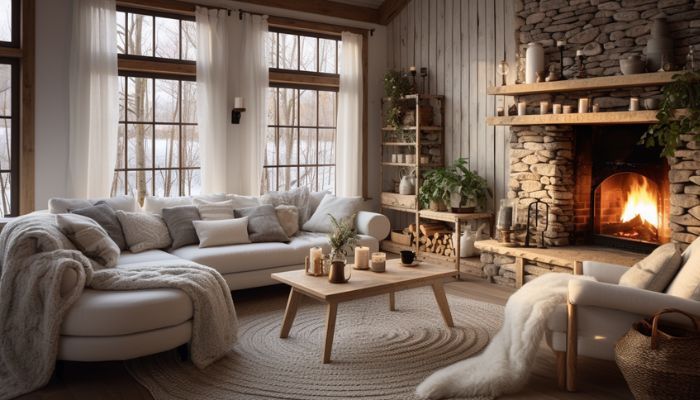Upholstery Cleaning Resolutions You Should Adopt This New Year
TLDR:
Maintaining clean upholstery is a key element for ensuring the longevity of your furnishings, the air quality in your home, and also your overall well being. This article will provide an overview of understanding the lifespan of upholstery, how daily cleaning habits can contribute to its longevity, exploring the link between clean upholstery and indoor air clarity, and discussing the importance of scheduling professional upholstery cleanings in your maintenance plan for the year.
Understanding the Lifespan of Clean Upholstery
Understanding the lifespan of clean upholstery is an important element of maintaining furniture and other items in the home or office. Upholstered items may become dirty and stained over time, but proper maintenance and cleaning techniques can help to keep it looking its best and provide for a longer lifespan that such items would have otherwise. However, it is important to be aware of how long upholstered pieces should last under routine care and cleaning.
The lifespan of clean upholstery will vary by item and fabric type. How it is used and how well it is cared for will also play into how long it will last. On the other hand, the quality of the fabric and foam may also impact lifespan. In general, some upholstered items can last twenty five or more years for non-traffic areas like accent chairs while couches and other items subject to more wear and tear will usually need to be recovered or replaced more often.
In addition, the type of cleaning and maintenance provided will make a big difference in how long upholstered pieces can last. Vacuuming and general spot cleaning with a non-abrasive cleaner are important steps. It is important to choose a cleaner that is appropriate for the fabric type; using the wrong cleaner may cause damage and reduce the lifespan of the item. Furthermore, the use of a protector spray that contains a micro-barrier protection can help to extend the life of the fabric.
For instance, regular maintenance and spot cleaning can help to reduce the amount of wear and tear on an item, allowing it to last longer. Similarly, stain repellents and other protection can also help to keep the upholstery looking its best. As a result of such steps, it is possible for some upholstered pieces to last for decades. In contrast, the neglect of maintenance and improper cleaning techniques may cause materials and items to have a much shorter lifespan.
Consequently, it is important to understand the fabric type, maintenance requirements, and cleaning that should be used for upholstered pieces to ensure they will last as long as possible. Following such steps can help to extend the lifespan of clean upholstery and ensure that any furniture and other upholstered items look their best for the longest time.
Daily Cleaning Habits for Upholstery Longevity
Maintaining clean upholstery is important for retaining its longevity and overall aesthetic value. Regular vacuuming of furniture helps to remove embedded dirt and debris from the fibers of furniture. Upholstered furniture should be vacuumed twice a week to ensure proper removal of accumulated dirt and debris. Vacuuming should be done gently, especially when vacuuming patterned or delicate fabrics.
Furniture should be cleaned regularly with a mild cleaning product that is designed for upholstery. Checking the manufacturer’s instructions regarding care and cleaning is advised as some fabrics may not be compatible with certain cleaning products. In addition, cleaning the furniture with a damp cloth or sponge can help to lift out some dirt and debris.
On the other hand, using liquid and solvent-based cleaning solutions should be avoided as they can be damaging and may cause discoloration, shrinking, or warping of the fabrics. Upholstery should also be spot-treated with a mild detergent and water solution. Spot-treating areas with the solution, and then wiping the area with a dry cloth after a few minutes, will help to remove surface dirt and debris.
In contrast, if the furniture has a protective finish or material, a gentle scrub with a soft brush should be used. Using a soft-bristled brush to remove embedded dirt and debris from fabric upholstered furniture is also effective. After brushing the fabric, a vacuum cleaner should be used to suck up the dirt and debris that has been removed.
Consequently, it is important to apply an upholstery protector against future stains. This will help with the maintenance of the fabric’s appearance and durability while making cleaning easier in the future. Furthermore, to protect furniture from direct sunlight, it is recommended closing window blinds or curtains, or simply rearranging the furniture if the fabric tends to fade easily.
Overall, proper upholstery cleaning habits help prevent stains, dirt, and debris from accumulating and extend the lifetime of the furniture. Meanwhile, preventing direct sunlight from reaching the fabric helps protect the furniture from fading. Following these daily cleaning habits for upholstery longevity will help to keep furniture looking good for many years to come.
The Link Between Clean Upholstery and Indoor Air Quality
The cleanliness of upholstery in a home has a direct impact on the air quality and health of its occupants. Upholstery such as furniture, curtains, and pillow covers can collect dust, dirt, and other debris over time. If these items are not properly cleaned or replaced, they can act as a host for allergens, bacteria, fungi, and other pollutants. These contaminants can then be disturbed and circulated around the home, resulting in decreased indoor air quality. For instance, pet owners may be at a greater risk of having higher levels of allergens and dander in their homes, due to fur and skin cells that can be collected on furniture and bedding.
In contrast, by regularly cleaning or replacing furniture, curtains, and pillow covers, homeowners can reduce the amount of dust, dirt, and other pollutants in their homes. Similarly, vacuuming and steam-cleaning these items on a regular basis can help in decreasing allergens and bacteria, and trapping them in the vacuum or steamer rather than circulating through the air. As a result, keeping upholstery and other textiles clean will greatly improve air quality.
Consequently, it is important for homeowners to regularly clean and change their upholstery in order to maintain a healthy living environment. Not only will this benefit their health overall, but each family member will be contributing to the preservation of air quality and their overall wellbeing.
Scheduling Your Homes Professional Upholstery Cleaning Maintenance for the Year
Professional upholstery cleaning and maintenance is an important part of keeping a home looking great and preventing costly repairs or replacements. Therefore, it is important to know when and how to schedule this important cleaning throughout the year.
Scheduling for the year should be done in the early spring or late winter when the weather is still mild. Most professional cleaners will have their busiest times from late spring through early fall as this is the preferred time for homeowners to deep clean and refresh their homes. However, it is not impossible to find professional cleaners who are willing to work off-season. Being flexible and booking early can increase the chances of finding an off-season appointment.
Scheduling a regular maintenance visit will help keep upholstered furniture looking its best throughout the year. A professional upholstery cleaner will be able to assess the current condition of the furniture and recommend a schedule that is best for that piece. For instance, some furniture is delicate and should be cleaned only every 6-12 months. On the other hand, furniture with heavier usage, or made of thick fabrics, should be cleaned at least every 3 months.
In addition to regards to scheduling, owners should also be aware of the possible hazards involved with home upholstery cleaning. Not all steam cleaning systems are the same and some can cause permanent damages to delicate fabrics. Some cleaners may be using harsh chemicals that are not safe for furniture, human health, or the environment. Therefore, it is important to research any cleaning companies a homeowner may consider to make sure that they are not putting their furniture at risk.
As a result, home upholstery cleaning maintenance should be done by a trained, experienced professional. Hiring a reputable cleaning company is the only way to guarantee that a home and its upholstered furniture are cleaned and maintained safely and effectively. Consequentially, making sure to take care of upholstery promptly can go a long way in keeping a house looking great throughout the year.
Final Thoughts
It is essential to understand the lifespan of upholstery and the need for daily cleaning habits for its longevity. Regular cleaning ensures that upholstery remains in good condition and does its part in improving indoor air quality. Appointing a professional upholstery cleaning service on an annual basis is a beneficial reminder to keep upholstery in maximum condition throughout the year. Therefore, regular maintenance and cleaning of upholstery helps not only in its longevity but also towards enhancing indoor air quality.
Frequently Asked Questions
What are the signs my upholstery needs cleaning?
1. Stains or spots on the upholstery
2. Excess pet hair or dirt build-up
3. Discoloration or fading of colors
4. Noticeable musty odor or odors
5. Material looks worn, dull or feels stiff
How can I maintain the freshness of my upholstery post-cleaning?
The best way to maintain post-cleaning freshness of upholstery is to vacuum the fabric regularly. Vacuuming helps to remove or reduce the amount of dirt and dust that can lead to build up, which would eventually cause dirt to penetrate the fabric. Additionally, you should use a fabric protector to create a barrier between the fabric and dirt, helping to keep it cleaner for longer. Finally, regular maintenance such as spot cleaning, brushing, and scotch-guarding can also help maintain the fabric’s freshness.
Is professional upholstery cleaning safe for all materials?
No, professional upholstery cleaning is not safe for all materials. It depends on the fabric of the upholstery as some fabrics may not hold up well to the chemicals or high-powered vacuum cleaners often used in professional upholstery cleaning. Before getting professional upholstery cleaning, it is important to check if the material is suitable for cleaning.
How often should upholstery be professionally cleaned?
Upholstery should be professionally cleaned every 12 to 18 months, depending on the amount of use and amount of traffic. Additionally, it can be helpful to vacuum and spot clean any visible spots throughout the year.

